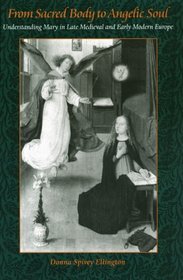Search -
From Sacred Body to Angelic Soul: Understanding Mary in Late Medieval and Early Modern Europe
From Sacred Body to Angelic Soul Understanding Mary in Late Medieval and Early Modern Europe
Author:
Through an insightful examination of popular sermons by some of the most famous preachers of the day, Donna Spivey Ellington discusses the importance of Marian devotion to the religious understanding of European Christians in the late medieval and early modern periods. She charts a dramatic shift of emphasis in the public portrayal of the Virgin... more »
Author:
Through an insightful examination of popular sermons by some of the most famous preachers of the day, Donna Spivey Ellington discusses the importance of Marian devotion to the religious understanding of European Christians in the late medieval and early modern periods. She charts a dramatic shift of emphasis in the public portrayal of the Virgin... more »
ISBN-13: 9780813210148
ISBN-10: 0813210143
Publication Date: 5/2001
Pages: 284
Rating: ?
ISBN-10: 0813210143
Publication Date: 5/2001
Pages: 284
Rating: ?
0 stars, based on 0 rating
Publisher: Catholic University of America Press
Book Type: Hardcover
Members Wishing: 1
Reviews: Amazon | Write a Review
Book Type: Hardcover
Members Wishing: 1
Reviews: Amazon | Write a Review
Genres:
- History >> Europe >> General
- Christian Books & Bibles >> Catholicism >> Mariology
- Christian Books & Bibles >> Church History >> General
- Christian Books & Bibles >> Theology >> Philosophy




